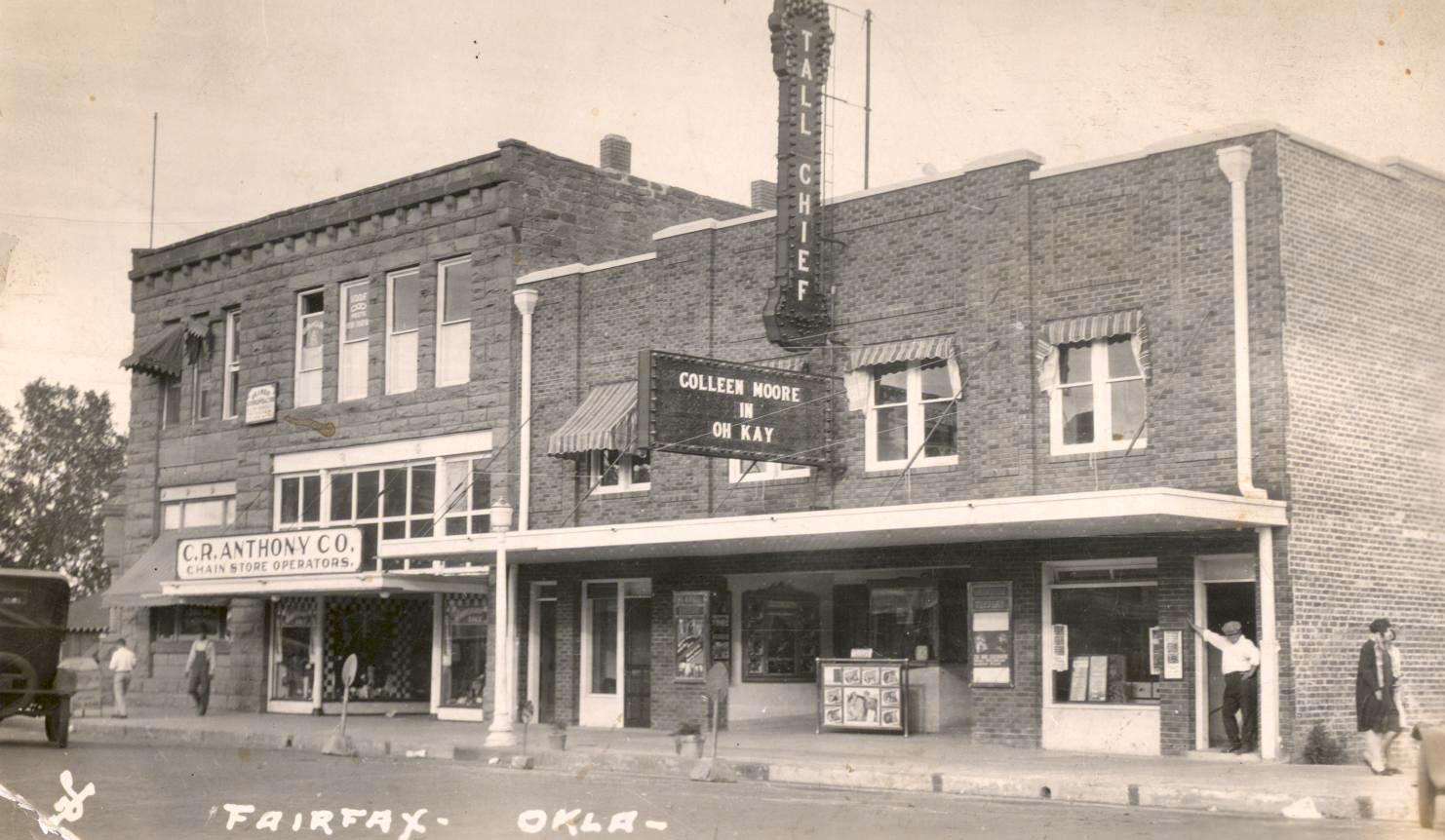FAIRFAX.
Situated along State Highway 18 in Osage County, Fairfax lies twenty-eight miles southwest of Pawhuska and thirty-two miles southeast of Ponca City. The community's history began in 1903 when the Atchison, Topeka and Santa Fe Railway built a line from Kaw City to Ralston through the Osage Reservation, bypassing the Osage Indian village of Gray Horse. Several Gray Horse merchants realized the economic advantages of the railroad. Lew A. Wismeyer, "the Father of Fairfax," persuaded railroad planners to construct a depot nearby and arranged to lease forty acres for a townsite. Wismeyer disliked "Coda," the station name selected by railroad officials, preferring Fairfax instead. He suggested it to his associates, and they agreed.
The Osage tribe retained title to the townsite acreage. Thus, surveyed lots were used only by right of occupancy. A townsite bill secured in 1904 helped Fairfax become a permanent community. On March 3, 1905, an addition to a congressional Indian appropriation bill provided for the land to be sold at public auction. The money from the sale was credited to the Osage.
Fairfax grew steadily, with ranching, farming, and petroleum as its main industries. The town had 470 residents in 1907 and peaked at 2,327 in 1940. Unfortunately, when oil production dropped, a decline in population followed. The population dropped to 1,869 by 1970 and briefly rose to 1,949 in 1980. The U.S. Census recorded 1,555 inhabitants in 2000 and in 2010 noted a drop to 1,380. Community newspapers include the Fairfax Banner, the Osage Chief, and the Fairfax Chief. Fairfax is presently located within seventy miles of five universities, three junior colleges, and three vocational-technical schools. The Fairfax and Ralston school systems consolidated and formed the Woodland Public schools in 1990. The principal religious denominations are represented, with nine Protestant and one Catholic church. The town has a hospital, a public library, numerous clubs, service organizations, and civic groups. In April 2020 the census reported 1,137 residents.
The Fairfax Historical Society's museum is located in the former First State Bank building. The Osage Bank of Fairfax (NR 84000315), the First National Bank and Masonic Lodge (NR 84003393), the Lincoln Colored School (NR 03001238), and the nearby Chief Ne-Kah-Wah-She-Tun-Kah Grave and Statue (NR 79002012) are local properties listed in the National Register of Historic Places. A public swimming pool, a tennis court, and a city park provide recreational activities. Several lakes and reservoirs are located nearby. Fairfax has a rich and colorful history. Locals share the fact that Maria Tallchief and Marjorie Tallchief are from Fairfax. Residents are slower to relate that their town was the site of numerous Osage murders (known locally as "the Osage Reign of Terror") during the mid-1920s.
See Also
Bibliography
Lorraine Clement, Carol Irons, and Howardean Rhodes, From a Field of Cane: The Early Years of Fairfax, Oklahoma, 1903–1913 (Fairfax, Okla.: Fairfax Area Historical Society, 1999).
Kenny A. Franks, The Osage Oil Boom (Oklahoma City: Oklahoma Heritage Association, 1989).
Osage County Profiles (Pawhuska, Okla.: Osage County Historical Society, 1978).
Citation
The following (as per The Chicago Manual of Style, 17th edition) is the preferred citation for articles:
Carol E. Irons, “Fairfax,” The Encyclopedia of Oklahoma History and Culture, https://www.okhistory.org/publications/enc/entry?entry=FA004.
Published January 15, 2010
Last updated
March 1, 2024
© Oklahoma Historical Society


